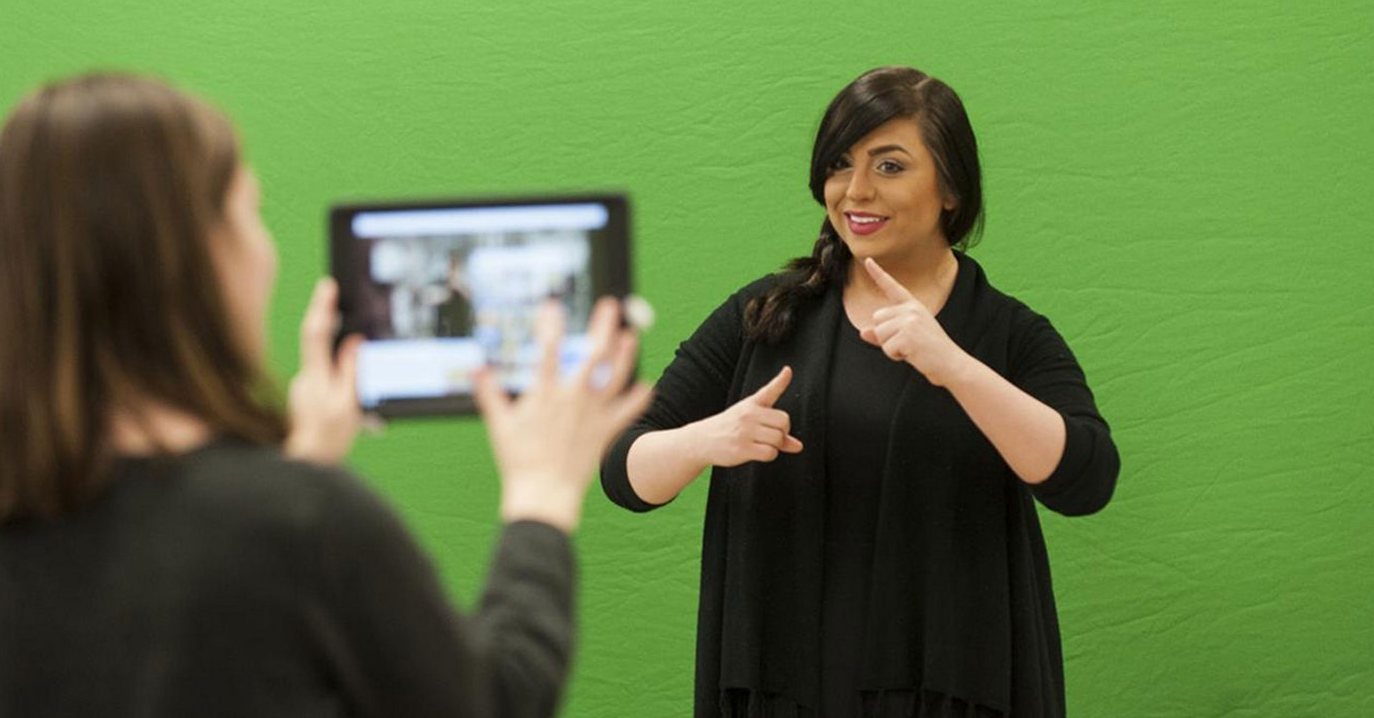Hearing in VR
Pros and Cons for users
- Pro: To date, virtual reality has focused mainly on the visual aspects of immersion
- Pro: Dialog in virtual reality applications is normally pre-recorded, so there is no reason why it can't be converted into captions and sign language
- Con: Some virtual experiences rely heavily on audible cues to guide users
- Con: Users may have difficulty distinguishing ambient noises from interface elements such as clicks, bleeps and transitions
- Con: Users may not be able to perceive the location of spatialized audio
- Con: Bluetooth and Wi-Fi latency and packet loss impacts upon the ability of users to perceive visual and audio events synchronously
- Con: Audio dialog requires captions
- Con: Sign language needs to be recorded separately
- Con: Users may not be able to communicate using voice chat

Audio Interface
| Ambient | Object | Movement | Informational |
|---|---|---|---|
| City street noise | Air-conditioning hum | Footstep sounds | Audio instructions |
Hearing Use Cases
- As a user with a hearing impairment, I need to be able to mute ambient sound scapes, so I can hear interface elements such as clicks, bleeps and transitions.
- As a user who hears better in one ear, I need to be able to control the location of spatialized audio, so I can hear interface elements.
- As a user with a hearing impairment, I need a visual indication of the speaker, so I identify who is speaking. 2
- As a user with a hearing impairment, I need captions of dialog and significant background noises, so I can read what is happening.
- As a user with a hearing impairment, I need visual or haptic equivalents of aural interfaces, so I can interact with interface elements.
References
An initial exploration of a multi-sensory design space: Tactile support for walking in immersive virtual environment.
Citation: Feng, M., Dey, A. and Lindeman, R.W., 2016, March. An initial exploration of a multi-sensory design space: Tactile support for walking in immersive virtual environments. In 2016 IEEE Symposium on 3D User Interfaces (3DUI) (pp. 95-104). IEEE.
Summary: Examines the use of multi-sensory feedback to improve user experience in virtual environments
Game Accessibility Guidelines
Citation: "Game Accessibility Guidelines | A Straightforward Reference For Inclusive Game Design". Gameaccessibilityguidelines.com. N.p., 2016. Web. 18 July 2016.
Summary: Designed as a reference for game developers, this site offers a detailed list of accessibility guidelines.